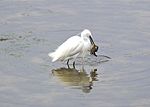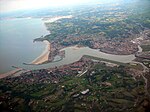Irun Ficoba station
Euskotren Trena stationsFrance–Spain border crossingsIrunRailway stations in Spain opened in 1913Spain rail transport stubs ... and 1 more
Wikipedia page with obscure subdivision

Irun Ficoba is a railway station in Irun, Basque Country, Spain. It is owned by Euskal Trenbide Sarea and operated by Euskotren. It lies on the San Sebastián-Hendaye railway, popularly known as the Topo line.
Excerpt from the Wikipedia article Irun Ficoba station (License: CC BY-SA 3.0, Authors, Images).Irun Ficoba station
Santiago kalea,
Geographical coordinates (GPS) Address External links Nearby Places Show on map
Geographical coordinates (GPS)
| Latitude | Longitude |
|---|---|
| N 43.349280555556 ° | E -1.7864694444444 ° |
Address
Irun Ficoba (Irún-Puente Internacional)
Santiago kalea
20302
Autonomous Community of the Basque Country, Spain
Open on Google Maps










